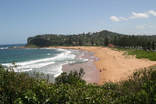
So… a threshing floor had to be a large, flat, open space on top of a hill or on open, flat ground, right? Which would mean that Ornan’s floor must have been on such a site, right?
Wrong! And misleading... perhaps resulting from traditional and idealized depictions in paintings. It’s true that some threshing floors of course, were in open areas both in valleys and on hilltops—but threshing floors have come in many sizes and in many locations. Some have been found on hilltops, but also in many other interesting sites. Take a look at these pictures above of ancient threshing floor sites around Europe to see what I mean.
What is this?
The strange markings near Gihon Spring
Now—what about the strange markings found on level limestone near the Gihon Spring site at the ancient City of David? A world-wide invitation was put out by archeologists and the City of David Foundation to help solve the mystery of what they might be. See https://www.biblicalarchaeology.org/daily/biblical-sites-places/jerusalem/what-are-these-strange-markings-found-near-jerusalems-gihon-spring/
Could it be possible? Despite all the categorical statements being made about where threshing floors have to be, that this flattened area half-way up the side of a ridge—on the side of a valley along which the prevailing Summer westerly winds of the threshing season, funneled—was eminently suited? Especially when there are evidences of a dwelling or dwellings in the rock behind it and a possible sacrificial altar nearby! And especially if you have been the chieftain of a stronghold and settlement once known as Jebus and had pride-of-place near its magnificent water supply...
So…in a radical view—open for comment, here goes--
I believe that this site ages ago, may well have been the threshing floor of Ornan the Jebusite. The very site where Ornan (also known as Araunah) said to David, ‘Take it to yourself….Look, I also give you the oxen for burnt offerings, the threshing implements for wood, and the wheat for the grain offering; I give it all’ (1 Chronicles 21:23 and 2 Samuel 24:22). More about the implements shortly…
To see how Ornan’s threshing floor located here might have worked, one depiction is given in my sketch below where the flat floor had a recess to accommodate a central pole which could be put in or taken out. Timber wedges would be used to clamp it in position (remember the low wall/s seen in the photographs of the site today were probably not there in Ornan’s time). This pole would have provided the central pivot around which Ornan’s oxen walked in their neck yokes as shown. Whilst the wheat or barley was being trampled by the oxen, the floor grooves (which served another purpose) were simply filled with timber pieces cut to fit so that the oxen had a flat surface when treading.
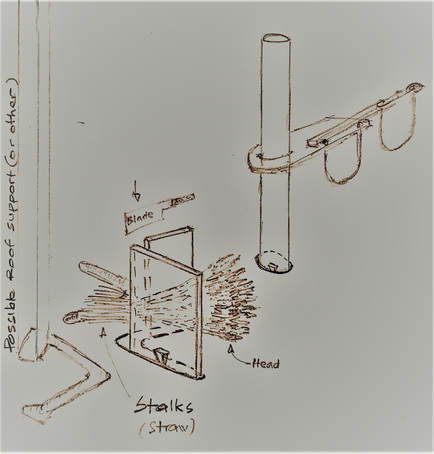
Sketch of the threshing floor of Ornan at the site of the strange markings near Gihon Spring, showing how the implements mentioned in the Biblical account may have featured on the floor. See explanation below.
Can you see that boards, wedged into the floor grooves with timber wedges would provide a useful ‘V’ into which one or more sheaves could be inserted with stems protruding for easy removal of the stem for discard to a separate straw stockpile? Once a batch of sheaves was trimmed and the heads placed on the threshing floor, the upright boards could be removed, perhaps then doubling as threshing sledges, then the oxen, yoked into the device, walked around the pole.
Compare the photograph of the grooves and of the central floor hole with what I have depicted in my sketch. Fanciful? I think not. Clearly these grooves had some mechanical function and I urge consideration of this proposal.
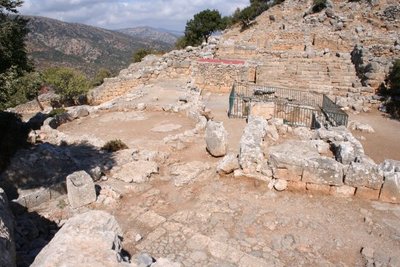
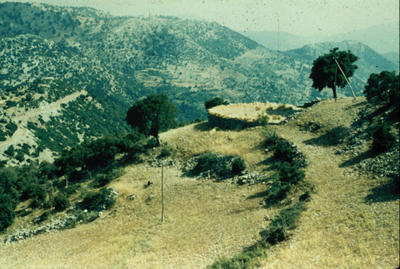
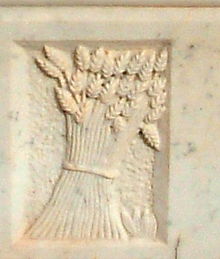
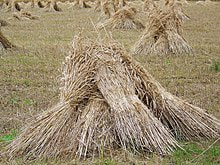
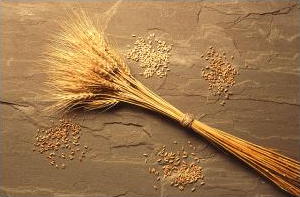
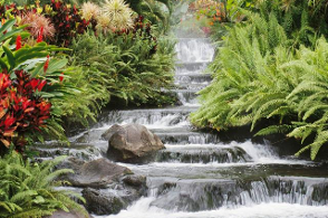
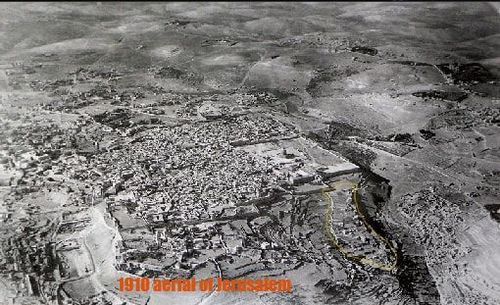
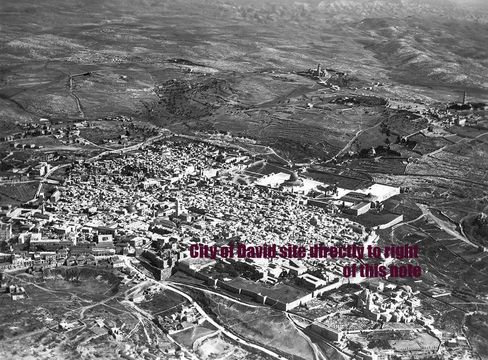
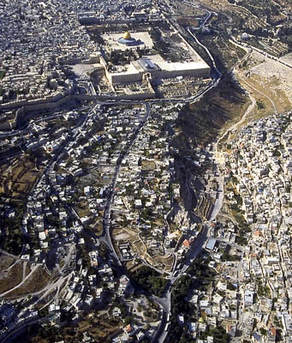
 RSS Feed
RSS Feed
